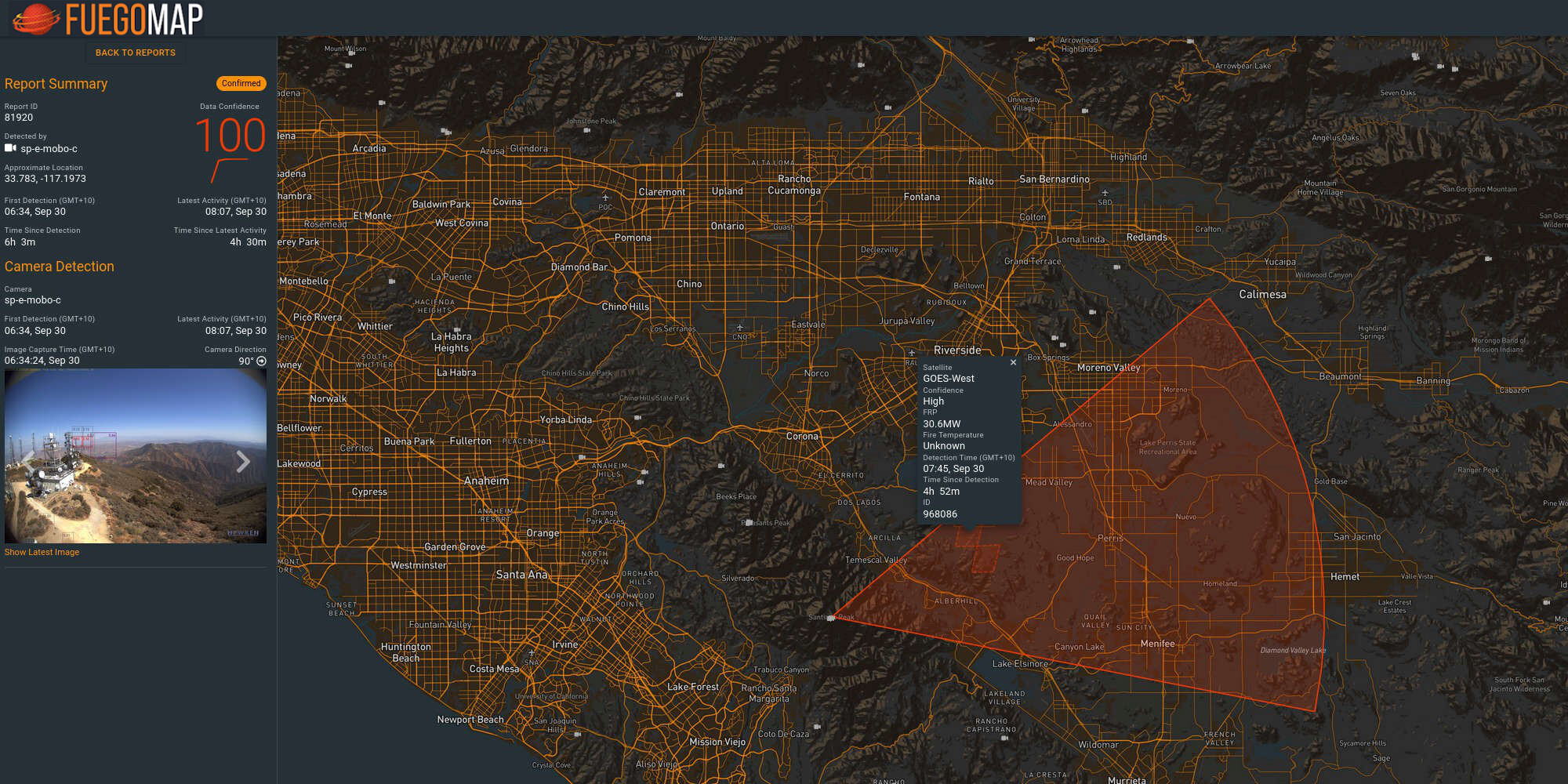Fireball International protects lives, homes, and the environment, through early detection, assessment, and mapping of wildfires. Founded in February 2020, it analyzes image data from third-party ground-based camera and satellite sources to accurately detect and predict wildfires. By leveraging AWS services like Amazon Simple Storage Service (Amazon S3) and Amazon Elastic Kubernetes Service (Amazon EKS), Fireball International has been able to build an efficient wildfire detection platform, processing over 2.5 million images and over 30GB of satellite data a day, and informing relevant authorities of potential wildfires within three minutes of smoke detection.

With AWS, the management and administration of our platform and backend operations is worry free. The AWS architecture we have in place and the AWS team we work with keep things running smoothly. This allows us to focus our efforts on improving the services and features we offer to customers, growing the business, and ultimately working towards protecting communities from harm.”
Paul Grambauer
Cloud Data Scientist, Fireball International
News of wildfires across California dominated headlines around the world in the first half of 2020, and before that, wildfires in Australia captivated much of the world’s attention.
Once a wildfire reaches the megafire stage, firefighters have no real means of stopping the destruction and can do little else but clear its path and evacuate people.
“Greater emphasis must be placed on detection when fighting fires. The earlier we detect and raise the alarm on a fire, the smaller it is likely to be and the higher chance we have of suppressing it,” comments Paul Grambauer, cloud data scientist at Fireball International.
With a machine learning (ML) and artificial intelligence (AI) platform on Amazon Web Services (AWS), Fireball International facilitates automated, real-time detection and tracking of wildfires.
Firing Up the Engine
Fireball International began as an academic project at the University of California Berkeley to test how technology could be incorporated to improve the prediction and early detection of wildfire occurrences.
In October 2019, Fireball International detected the Kincade fire in California 66 seconds after it ignited. With proof-of-concept in hand, the company set its sights on scaling its offering and bringing it to market.
Fireball International was running on different open-source solutions strung together as a proof-of-concept and sought help from AWS in building an event-driven development pipeline that could fully automate the processing and analysis of image data and its alert system.
Today, Fireball International receives and processes more than 2.5 million images and over 30GB of satellite data per day. It stores the images on Amazon S3. These images are then aggregated to detect and predict wildfire locations, using ML models, which Fireball International continuously builds, trains, and deploys. Through its use of ML, Fireball International can detect wildfire outbreaks and predict how they might spread, with zero false positives.
By automating this process on Amazon EKS, Fireball International is able to scale its ML applications when required, allowing it to derive insights from image data quickly and accurately. With Amazon Simple Notification Service (Amazon SNS) and Amazon Simple Email Service (Amazon SES), it can alert frontline responders five times faster than the average time it would take for the relevant authorities to be alerted through human reporting.
Grambauer adds, “Many platform components needed to be fine-tuned before we could launch our product. Thankfully, the AWS suite of services covers these different components comprehensively. With the architecture that we built on AWS, we can process over a billion images a year and accurately detect and alert relevant authorities of a potential outbreak within three minutes of there being any smoke.”
Planning Ahead
Born in the AWS Cloud, Fireball International avoided the hassle involved with administration and systems management that comes with the set-up of a business.
“With AWS, the management and administration of our platform and backend operations is worry free. The AWS architecture we have in place and the AWS team we work with keep things running smoothly. This allows us to focus our efforts on improving the services and features we offer to customers, growing the business, and ultimately working towards protecting communities from harm,” says Grambauer.
Trusting AWS to manage its core infrastructure, Fireball International is able to direct its efforts towards building up its operations. It currently receives image data from third-party sources, and primarily monitors two regions for potential wildfire outbreaks—California in the United States, and across the eastern states of Australia. The company has plans to launch its own Australian satellite by 2023 and expand its services in these regions and beyond.
As of 2020, Fireball International has 20 customers across the US and Australia and is constantly looking at how it can expand its service offerings to them.
In regions of Australia where camera infrastructure is not as comprehensive, Fireball International is in discussion with the relevant authorities and stakeholders on building up a more complete fire detection infrastructure.
Whatever the near future may hold, Fireball International is confident that AWS will allow them to scale on demand to meet any influx of data and consistently deliver insights that help to protect lives and communities.
Benefits of AWS
- Able to store and process over 2.5 million images and over 30GB of satellite data per day
- Able to accurately alert relevant authorities of potential wildfires within 3 minutes of smoke detection
- Capability to plan for continuous expansion of services, and handle any influx of image data from additional sources
by AWS
2021

